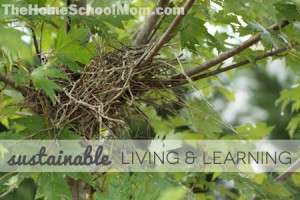This post is contributed by Oak Meadow, the sponsor of our Living Education series.
The Heart of Learning was written by Lawrence Williams, Oak Meadow's cofounder, president, and a pioneer in homeschooling and distance learning. Its timeless lessons have informed homeschooling families for over three decades and been an integral part of our K-3 curriculum. Enjoy this sneak preview of the newly revised 35th Anniversary edition of The Heart of Learning, and stay tuned for the upcoming release to read these chapters in full.
 Many of us find it easy to dive into new things with gusto. Once we've made the decision to try something new, like homeschooling, we want to learn everything we can so we can be really, really good at it. We make big plans—we'll work our annual trip to the seashore into a unit on oceanography!—and create rosy images of winter days with our children studiously bent over their books at the kitchen table while we bake homemade crackers and upload photos of the latest clever homeschool project to our blog site.
Many of us find it easy to dive into new things with gusto. Once we've made the decision to try something new, like homeschooling, we want to learn everything we can so we can be really, really good at it. We make big plans—we'll work our annual trip to the seashore into a unit on oceanography!—and create rosy images of winter days with our children studiously bent over their books at the kitchen table while we bake homemade crackers and upload photos of the latest clever homeschool project to our blog site.
Then reality hits.
The baby wants to be held constantly, so forget the homemade crackers. The trip to the shore was a blur of flipflops, sunscreen, and sandy snacks. And the fourth grader still can't seem to write legibly no matter how many times we remind her. The clever homeschool projects are assimilated into the general clutter without a single photo being snapped, and dreams of capturing the miraculous journey of home learning in weekly blog posts is long lost. In a short time, our resources—physical, emotional, financial—are exhausted.
We often create unrealistic expectations of ourselves and our homeschooling. Rather than helping us become better teachers, this only serves to wear us down even more. Pretty soon, homeschooling begins to feel impossible, too difficult, too time-consuming, too life-consuming.
So how can we make home learning sustainable? How can we arrange our lives so that homeschooling becomes doable and not an added stress in an already overflowing life?
Sustainable by design
If we really want our homeschooling lifestyle to work for our families in the long run, we have to design sustainability into it. How do we do that? There are lots of ways, and the answer is different for every family, but here are some basic ideas.
Intentional simplicity
More often than not, it's a good idea to keep things simple: cooking with what we have in the house (rather than taking another trip to the grocery store); scheduling distraction-free time into each day (whether that means free from phones, email, electronics, or whatever we find takes our attention away from the present moment); reducing clutter by putting away half the toys in the house (and rotating them periodically, or better yet, giving them away); or declaring a "Little House on the Prairie Day" once a month (when we can't use anything that needs to be plugged in). These are all ways that we can intentionally build simplicity into our lives.
Downsize your life
We can downsize the number of outside commitments to give us more time to take care of ourselves or do what we love. We can downsize our scheduled activities to make our day more manageable. Some families choose to downsize their homes, living in a smaller space to save time, money, and resources (both environmental and personal). We can downsize our expectations of ourselves, of others, of what we think our house should look like or our homeschooling should be.
Slow down
When we slow down, we can find lots of things to appreciate. Living life in fast forward usually means missing or skipping over all the delicious little details that bring us joy and contentment. Nature observations (a bee visiting a flower patch, a bird building a nest, a puppy exploring snow for the first time) are always best enjoyed at a leisurely pace. Heartfelt conversations—especially those quiet ones that happen at bedtime—can't be rushed. It takes time to express oneself fully and to respect the thoughts and feelings of others. Slowing down sends a message to ourselves, to our children, and to the world that life is worth savoring, that we are people who take the time to enjoy life.
Taking the Long View
Creating a lifestyle of learning means that we will be learning right along with our children. Our lessons might not be about fractions and prepositions (then again, they might be!), but they will be about how to create a healthy living and learning environment for everyone, including ourselves. Once we learn to see our own health and well-being as a priority, we'll find we have more energy, focus, presence, and attention for our children. What's good for one is good for all. When we apply sustainability to our living and learning, everyone wins.



 Enjoy these posts from the pages of Living Education, the seasonal journal from our contributing sponsor,
Enjoy these posts from the pages of Living Education, the seasonal journal from our contributing sponsor,
Leave a Reply